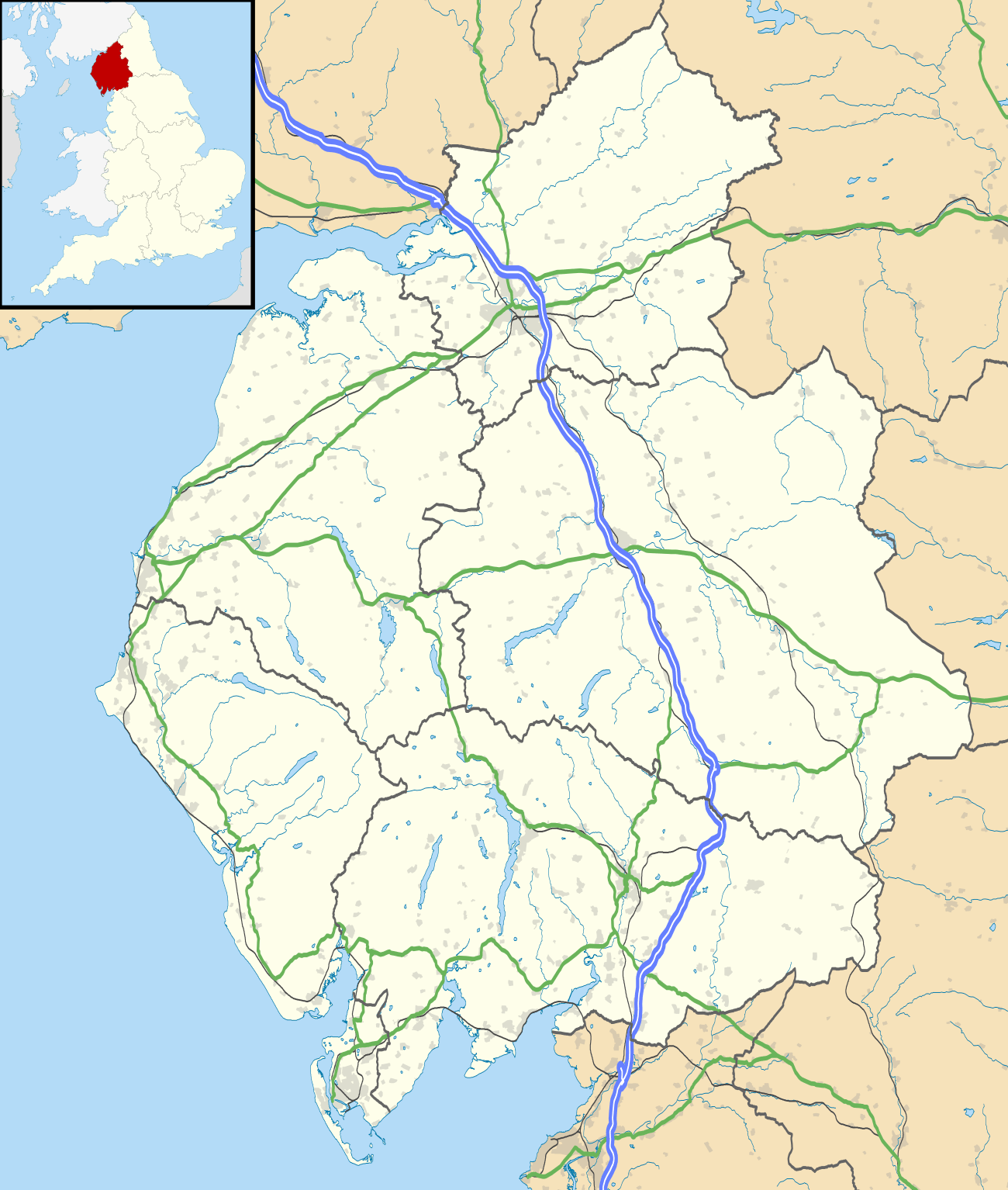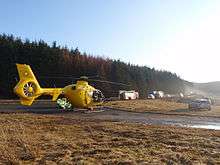Furness General Hospital
| Furness General Hospital | |
|---|---|
| University Hospitals of Morecambe Bay NHS Foundation Trust | |
 The Accident and Emergency entrance at FGH | |
 Shown in Cumbria | |
| Geography | |
| Location | Barrow-in-Furness, Cumbria, North West England, United Kingdom |
| Coordinates | 54°08′11″N 3°12′28″W / 54.1364°N 3.2079°WCoordinates: 54°08′11″N 3°12′28″W / 54.1364°N 3.2079°W |
| Organisation | |
| Care system | Public NHS |
| Hospital type | Teaching |
| Affiliated university | University of Liverpool |
| Services | |
| Emergency department | Yes Accident & Emergency |
| Beds | 258[1] |
| History | |
| Founded | 1984 |
| Links | |
| Website |
www |
| Lists | Hospitals in the United Kingdom |
Furness General Hospital (FGH) is a hospital located in the Hawcoat area of Barrow-in-Furness, Cumbria, England. It is part of the University Hospitals of Morecambe Bay NHS Foundation Trust.
History
The hospital, which replaced four local hospitals (Devonshire Road Hospital, North Lonsdale Hospital, Risedale Maternity Hospital and Roose Hospital), opened on 14 October 1984.[2] Margaret Thatcher, Prime Minister, visited the hospital in September 1986.[2]
In May 2001 a DNA test was conducted in the hospital on a body recovered from the infamous Bluebird K7 crash which demonstrated that it was indeed that of Donald Campbell.[3]
One of the world's worst legionnaires' disease outbreaks occurred in Barrow in October 2002. Ultimately 7 people died as a result of contracting the disease, while a further 172 cases were confirmed at the hospital.[4]
The Furness General Hospital scandal involved an investigation by Cumbria Constabulary and other government and public bodies into the deaths of several mothers and newborn babies at the hospital. Cases dated back to 2004, with a number of major incidents occurring in 2008. The death of Joshua Titcombe and a suppressed report by the Morecambe Bay NHS Trust brought the spotlight onto the hospital in 2011 when investigations began.[5] Claims of medical records being intentionally destroyed alongside the discovery of major wrongdoing on behalf of midwives led to threats of closure to the maternity ward.[6]
A number of injured passengers involved in the February 2007 Grayrigg train derailment were brought to the hospital.[7]
The body of Derrick Bird who killed 12 people in the 2010 Cumbria shootings was formally identified at the hospital. However, unlike West Cumberland Hospital and the Cumberland Infirmary, FGH was not on high alert during the shooting spree itself.[8]
A ward was closed in April 2015 after an outbreak of norovirus.[9]
The new South Lakes Birth Centre, built at a cost of £12 million, was opened at the hospital on 14 February 2018.[10]
Services
An average of between 1,200 and 1,300 babies are delivered in FGH every year, this is one of the lowest figures of any general hospital in North West England.[11][12] In terms or waiting times at FGH, 93% of patients are treated within an 18 week period.[13][14] The MRSA blood infection rate at the hospital is extremely low with only 0.8 infections for every 10,000 bed days.[14][15] (which is on par with national average).[14] Overall the hospital has been rated 'fair' although the food provided has been rated 'excellent' and the quality of the hospital environment, 'good' (81% of people who have rated FGH on the NHS official website would recommend to a friend).[14]
The majority of people rescued from accidents in the Lake District Mountains come to the hospital.[16]

Performance
An inspection by the Care Quality Commission (CQC) published in February 2017 gave the hospital a good overall rating with caring graded as outstanding but with patient safety requiring improvement.[17]
See also
References
- ↑ "Freedom of Information Publication" (PDF). University Hospitals of Morecambe Bay NHS Foundation Trust. p. 5. Retrieved 13 September 2018.
- 1 2 Black, Jeremy (2017). A History of Britain: 1945 to Brexit. Indiana University Press. ISBN 978-0253029720.
- ↑ "DNA tests on Bluebird body". BBC. 29 May 2001. Retrieved 13 June 2010.
- ↑ "Legionnaires' Disease - Testing Positive". BBC. Retrieved 13 September 2018.
- ↑ Triggle, Nick (3 March 2015). "Furness baby deaths inquiry: 'Lethal mix of failures'". BBC News. Retrieved 3 March 2015.
- ↑ Lidiard, Emma. "Axe threat to Furness General Hospital unit". The Westmorland Gazette. Kendal. Retrieved 1 November 2011.
- ↑ "Community praised for heroic response". The Westmorland Gazette. Retrieved 26 June 2011.
- ↑ "Inquests open into victims of Cumbrian shooting spree". BBC. 7 June 2010. Retrieved 13 September 2018.
- ↑ "Furness General Hospital norovirus outbreak closes ward". BBC. 29 April 2015. Retrieved 13 September 2018.
- ↑ "Lighting Reduces Strain For Surgeons At £12 M Maternity Unit". Health Services Journal. 12 February 2018. Retrieved 13 September 2018.
- ↑ "Barrow family's Furness General Hospital baby agony". North West Evening Mail. Retrieved 13 June 2010.
- ↑ "Basic Maternity Statistics For The Northwestern Region (2009)". BirthChoiceUK. Archived from the original on 18 January 2013. Retrieved 13 June 2010.
- ↑ 93% of patients are treated within an 18-week period
- 1 2 3 4 "Furness General Hospital". National Health Service. Retrieved 13 June 2010.
- ↑ The mortality ratio at FGH is 100.3
- ↑ "Coniston Mountain Resuce Incidents". Coniston Mountain Rescue. Archived from the original on 26 October 2011. Retrieved 26 June 2011.
- ↑ "Furness General Hospital". Care Quality Commission. Retrieved 13 September 2018.